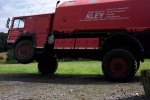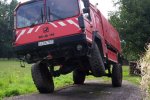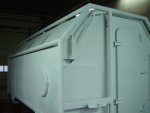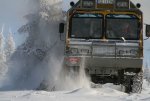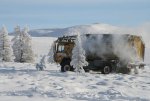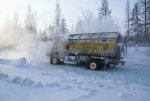Haf-E
Expedition Leader
The i8 Hybrid BMW is sort of both a serial hybrid and a parallel hybrid - the front axle is electric drive only (serial) but the rear wheels are powered by either the engine, electric motor or both (parallel) .
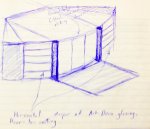


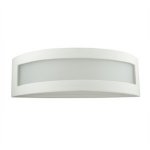
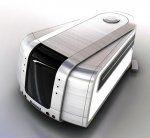
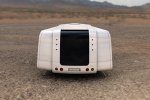
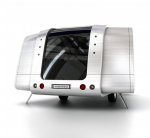

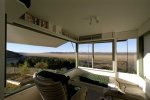
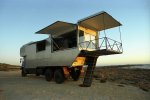
For a project like yours, I wouldn't even consider an external roll cage - a.k.a., "Rhino Bars". Too ugly, too much aerodynamic laminar flow disruption, and not really needed anyway.
A couple of beefy front and rear bumpers, and perhaps a few strategically placed brush guards should be adequate protection for the bodywork. The structure itself protected by the ribs and stringers of the bodywork, like the pics you've posted of buses.
I doubt if anyone is going to tip your truck over on its side. And if they do...they'll probably just ship the truck somewhere to get it fixed and catch a flight home.
OR...
You could include an internal cage into the body, and have attachment points so that protection bars or plates could be bolted through the body to the cage, so that the force of external hits would be transferred to the cage. I'm picturing something like I saw on a pic of a modern Airstream trailer, though perhaps not as large:
View attachment 261074
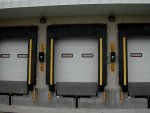
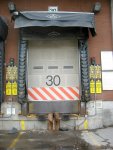

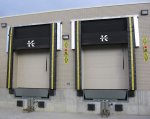
Hi NeverEnough,
Excellent summary of arguments for "mongo IS" and 6x6, and a frank, candid admission that "turtling" is a potential problem. Why is lifting the middle axle on ordinary paved roads so critical for you? It has come up a few times in the thread. Egn was against a lifting axle, and he drives his 6x6 everywhere:
So why would lifting the second axle be important for you? Just reduced fuel consumption, or additional reasons? As things are panning out, it will indeed prove possible for the TerraLiner to weigh 18 tons or less -- after all, Peter Thompson's Mañana weighs this much, and Mañana is 10.74 m long (see http://www.thompsons.au.com/motorhome/ ), and was not constructed out of carbon fiber and titanium....:sombrero:
So again, just curious why you and a few others think that lifting one axle for road driving is so critically important.
All best wishes,
Biotect
All,
Here is a really great video of a wide range of trucks having fun: Magirus, MAN, Tatra, Unimog, IFA, etc.
Campo, about 2:35 into the video is a perfect example of what appears to be a Magirus truck "turtling". It has gotten stuck on the peak of a hill because its breakover angle was insufficient, i.e. because its inter-axle distance was too great:
Again, for breakover angle, see http://en.wikipedia.org/wiki/Breakover_angle . Has this ever happened to you in your 4x4? Do you know of anyone to whom it has happened? For me, this seems to be one of the strongest arguments in favor of a 6x6, because with three axles instead of two, the inter-axle distance could be minimized for a vehicle 9.5 or 10 m long.
All best wishes,
Biotect
[I addressed this question about turtling to campo, but NeverEnough kindly replied:]
Yes, in a jeep, truck, atv and even motorcycle, but not in my RV. There's something "impractical" about putting several hundred K at risk trying to get to a campsite! So I'm just not too concerned with center lift or a lot of other stuff, because I just want my slide-outs (not mention doors and windows) to work after bouncing down rough roads for hundreds of miles- which is much more difficult than it might sound.
So what is my argument for IS? It's faster over rough roads, and time is valuable. Being able to travel just a little faster without inflicting unwanted (and expensive) wear and tear on a trick camper can add a lot of value to the journey. My rig does great on washboard at high speed because of the huge wheels. It would do even better with a mongo IS. And I'd pick up a few more miles per hour on the ruts and cobble, which is what really slows you down. Sure, there are occasional tricky spots that require good angles and strong construction, but I take it slow and I'm not afraid to back up, turn around, and find another way. As for 6x6, I like the idea for the redundancy, floatation, traction, even for the angles to get in and out of a wash or stream ford. But I'd like it a lot more if one pair could lift for the inevitable 90% of travel on paved roads (meaning a rig light enough to be well within spec on just 4 wheels).
Hi NeverEnough,
Excellent summary of arguments for "mongo IS" and 6x6, and a frank, candid admission that "turtling" is a potential problem. Why is lifting the middle axle on ordinary paved roads so critical for you? It has come up a few times in the thread. Egn was against a lifting axle, and he drives his 6x6 everywhere:
So why would lifting the second axle be important for you? Just reduced fuel consumption, or additional reasons? As things are panning out, it will indeed prove possible for the TerraLiner to weigh 18 tons or less -- after all, Peter Thompson's Mañanaweighs this much, and Mañana is 10.74 m long (see http://www.thompsons.au.com/motorhome/ ), and was not constructed out of carbon fiber and titanium....:sombrero:A lift axle would certainly reduce fuel consumption, but the ride will probably not be as comfortable as with 3 axles on road, as the suspension has to be harder at same weight.
So again, just curious why you and a few others think that lifting one axle for road driving is so critically important.
All best wishes,
Biotect
Not critically important, but a nice feature to have.
Less wear on tyres,(as long as the tyres not raised have sufficient load ratings)
Less tyre noise when travelling on concrete roads for long distances.
If you can enable all wheels to be able to be lifted individually, then changing wheels would be quicker!
Saving on fuel as wheels not needed to be driven,plus less friction.
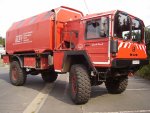
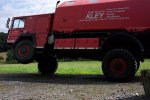
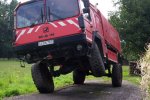
Dock bumpers??!
Most commercial trucks have large rubber 'halfpipe' ( for a better word) bolted to the back of the vehicle.
The bumpers are there mainly to avoid damage to the loading dock if the vehicle backs into it to hard.
on the subject of jacking up my truck, we get a tyre fitting company to do it for us.
They use pnuematic powered jacks, they just place the jack under the appropriate axle,and lift the required wheel.
They either then remove the wheel and attend to the tyre on the ground, or they remove the tyre from the wheel in situ.
This obviously won't work on soft ground without placing the jack on some kind material to spread the load.
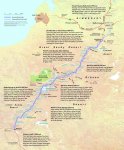
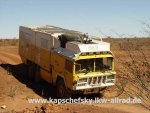
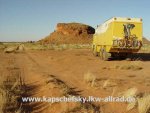
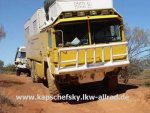
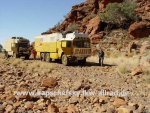
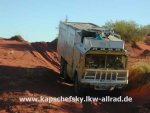
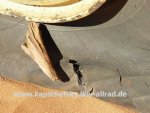
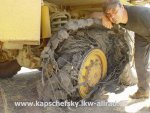
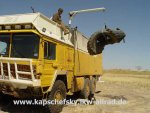
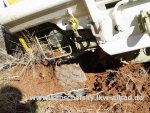
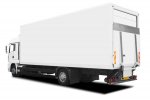
Hi optimus,
Many thanks for the reference to Ronfell. These links should all work: http://www.vehiclewheelchocks.com/product-category/hgv-bumpers/ , http://www.vehiclewheelchocks.com/product/200-78-hgv-bumper/ , http://www.flameretardantrubber.com/products/ , http://www.vehiclewheelchocks.com/product-category/rubber-buffers/ , and http://www.flameretardantrubber.com .
In the following image from the Ronfell website, where are the bumpers located on the rear of the vehicle? Again, see http://www.vehiclewheelchocks.com/wp-content/uploads/2014/01/200-78-hgv-bumper.jpg , http://www.vehiclewheelchocks.com/wp-content/uploads/2014/01/HGV-Rear.jpg , http://www.vehiclewheelchocks.com/product/200-78-hgv-bumper/ :
View attachment 261248
What do others think?
LoRoad, if this kind of large rubber "half-pipe" bumper had been mounted on the sides and the top of the back of your expedition camper, do you think it would have made much of a difference when you backed into a tree?
All best wishes,
Biotect



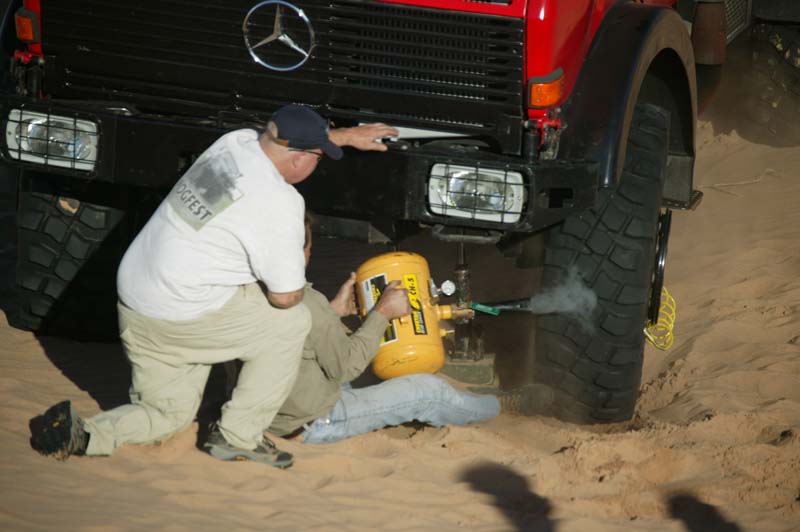
Some of the best overland big truck tire info I've seen, is on Bill Caid's site:
http://www.billcaid.com/UnimogRepair/Wheels.html#Tires
This pic from Bill's site shows jack and cribbing behind the air cannon - under a Mog, in a desert. Pretty much says it all.:

The mog is a big truck and big trucks have big tires. Big, heavy, expensive tires. And big tires generate big work when something goes wrong like a flat or a de-bead.
The stock tire for the 1300 is a 12.5R20 or the metric equivalent. These tires are huge compared to passenger tires, but the are pretty wimpy tires in the entire scheme of things. And they really could never make a trip like the Altar desert. The 14.5R20s are better, but still not up to the task of deep, soft sand. The Michelin XM-47s were the only tire we found that could actually operate in the deep sand and not debead. We also discovered that the Continental Sand Service tires worked well, but they are not DOT rated for highway use which required logistical backflips to be able to use them on the trail.
Over the years I ran many kinds of tires on my truck, mostly Michelins but also Continentals as well. The Contis were fine tires, but hard to find (back then); the Michelins were easier. I ran XL, XS, XM, XML and XZL (395s) models on my truck. The XL and XS tires were, in my opinion, ****. They wore poorly and did not handle air-down situations well. The XMs are THE tire to have if you can find them and can afford them. Last time I checked they were in short supply and about $1200 each. XML tires are not really the correct tire for the 1300. In fact, to run them, we had to install a body lift to allow them to fit. The concept of a body lift on a mog is rather absurd given how big the truck is, but that is what was required to allow the tires to fit without rubbing. The benefit is that XML tires can be had surplus for about $150 for a mostly new tire. And, if most of your travel is going to be on asphalt, why grind down your expensive and rare XMs on the pavement. My solution was to buy a spare set of rims and mount the ex-mil tires and head out. Our trip to Alaska and back was on ex-mil tires. Ditto for a cross-U.S. trip the following year. The 395s really want a 10" rim and the mog rim is 11". So, getting these tires to set the bead is hard (ether-explosion hard). And, because of this, they cannot air down well. 20 psi is the minimum we would run with the bigger tires.
